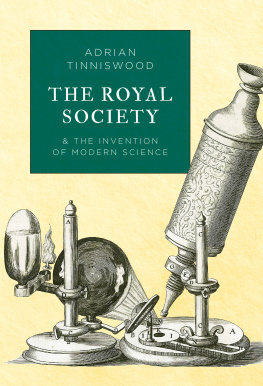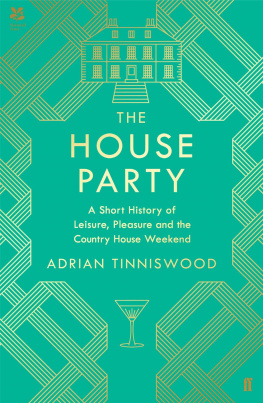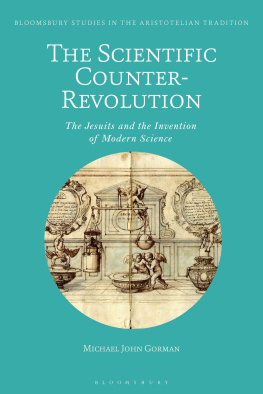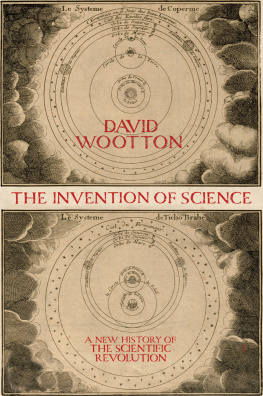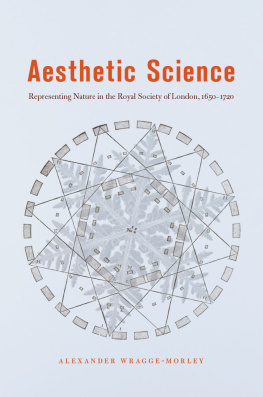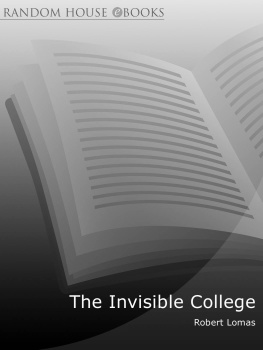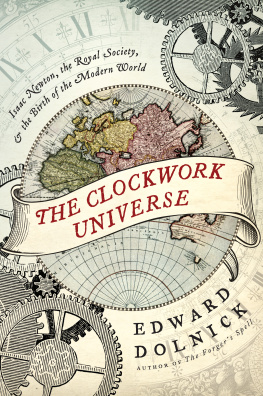THE ROYAL SOCIETY
Adrian Tinniswood
AN APOLLO BOOK
www.headofzeus.com
On 28 November 1660, the year of Charles IIs Restoration, a group of twelve men, including a professor of astronomy called Christopher Wren and a physicist and chemist named Robert Boyle, assembled at Gresham College in the City of London. They were inspired by the empirical philosophy of Francis Bacon, and they decided they would meet once a week, on Wednesdays, for the advancement of various parts of learning.
Thus did the Royal Society of London for Improving Natural Knowledge come into being. It has been at the forefront of scientific endeavour for more than 350 years, and its 8000 elected Fellows have included every important scientist working in Britain, from Isaac Newton and Charles Darwin to Tim Berners-Lee and Stephen Hawking.
Adrian Tinniswood charts the fortunes of a British scientific institution that has changed the way we look at the world, and whose dedication to the scientific method is summarized by its motto. Nullius in verba means on the word of no one a reminder of the Royal Societys founding belief that authority must always be questioned, that hypotheses can never be taken for granted, and that truths must be demonstrated or they are not truths at all.
Contents
To Lucy, with thanks

Distinguished Men of Science of Great Britain Living in the Years 18078 , an imaginary gathering designed by the artist Sir John Gilbert in 1862.
The Wellcome Trust.

Ocular inspection
Imagine a universe in which the sun revolves around the earth.In fact, you dont have to imagine it. All you have to do is believe the evidence of your own eyes. Isnt it obvious? Every morning the sun rises in the east. It tracks across the sky and then it sets in the west. You can see it happening. The very phrase sunrise makes it clear that it is the sun which moves.
And if someone were to suggest to you that it is really the earth which flies through space, and that it spins on its own axis as it does so, youd be justified in asking how we manage to stand upright? If were hurtling through the solar system at great speed, why isnt there a perpetual great wind blowing? Why arent we hurled off into space?
But it isnt only common sense that tells you the sun moves round the stationary earth. In a rare display of unity, both Catholic and Protestant theologians are quite clear on the matter. The Catholic Church tells us the view that the sun stands motionless at the centre of the universe is foolish, philosophically false, and utterly heretical, not least because it contradicts holy scripture: when Joshua asked God for help in his battle against the Amorites, the sun stood still and the moon stayed, until the people had avenged themselves upon their enemies. Martin Luther pokes fun at fools who claim the earth goes around instead of the sky, the sun, the moon, just as if somebody were moving in a carriage or ship might hold that he was sitting still and at rest while the earth and the trees walked and moved. John Calvin says people are deranged, possessed by the devil, if they really think the sun does not move, and that it is the earth which shifts and turns.
If you turned to that other great bastion of authority, the writings of the ancients, youd receive the same message. Aristotle and Ptolemy, who after all knew rather more about these things than we do, understood perfectly that the universe was geocentric, with the moon, the sun, the planets and the stars moving around a fixed spherical earth in a series of concentric celestial spheres. Wouldnt you be foolish to think any different?
This is the world into which the Royal Society of London was born. A world in which most people, if they thought of cosmology at all, still accepted the Aristotelian and Ptolemaic vision of the universe. True, a few more advanced thinkers were aware that the traditional view was being challenged. They knew of theorists like Nicolaus Copernicus, the Polish astronomer whose De revolutionibus orbium coelestium (1543) was one of the first works to articulate a heliocentric worldview (the very first was a work, now lost, by the ancient Greek astronomer Aristarchus of Samos who, according to Archimedes, suggested in the third century BC that the earth revolved around the sun). They knew of the German astronomer Johannes Kepler, and his theory that the planets moved in elliptical orbits around the sun. But they also knew of Tycho Brahe, who tried to reconcile Ptolemaic and Copernican explanations of the universe by suggesting that while the five planets Mercury, Venus, Mars, Jupiter and Saturn did indeed move round the sun, the sun itself moved round the earth. And they had heard of Giordano Bruno, the Italian natural philosopher who in February 1600 was burnt at the stake for maintaining that there were infinite worlds and for defending the Copernican system.
In 1633, while most of the founders of the Royal Society were still children (and several werent even born), Galilei Galileo was hauled before the Inquisition, forced to recant his belief that the earth moved and placed under house arrest for the rest of his life.
In medicine, the humoral pathology of the ancient Greek physicians Galen and Hippocrates was still current in the seventeenth century. Medical men believed that good health relied on maintaining a balance between the four humours that were thought to inhabit the human body and be mixed together in the veins: blood was associated with the liver; phlegm was associated with the brain and lungs; black bile, or melancholer, was secreted by the spleen; and yellow bile or choler by the gall bladder. A marked humoral imbalance was regarded as being the cause of most complaints, and even dictated character. According to The Sick-mans Rare Jewel , a popular medical treatise of 1674, those in whom phlegm hath the dominion are of a slow capacity, dull, slothful, drowsy, they do dream of rains, snows, floods, swimming and such like. Most of the population held to the humoral pathology right through until the later seventeenth century, believing in the humours and the ebb and flow of blood from the liver. Galen of Pergamon, a Greek who lived and worked in Rome in the second century AD , had declared that this was how the body worked even though, as far as we know, he never dissected an adult human.
In the universities, classical authority underpinned scholarship. Undergraduates in the Faculty of Arts at Oxford had to spend four years in the study of arts and in diligent attendance, according to the exigence of the statutes, upon the public lectures within the university. This meant grammar, rhetoric, logic, moral philosophy, geometry and Greek, with a heavy emphasis throughout on Aristotle and commentaries on him. In petitioning for his degree, a student stated that his qualifications would suffice for his admission to lecture on every book of Aristotles logic. Lectures, which were in Latin, lasted a civilized forty-five minutes, and students were fined for non-attendance. Conversation at dinner and supper was also in Latin. Tutors directed students studies, read with them each morning and pointed them in the direction of the right texts: the theologians Bartholomus Keckerman and Robert Sanderson on logic; Cicero, Pliny, Caesar and Livy for rhetoric and history; the New Testament in its original Greek; Franciscus Pavoniuss Summa Ethicae for moral philosophy. A masters degree meant another three years of Aristotle together with Greek, Hebrew, classical history, natural philosophy, geometry and astronomy. The few texts in the curriculum whose authors hadnt been dead for centuries were commentaries. And they were commentaries on those same long-dead authors.

